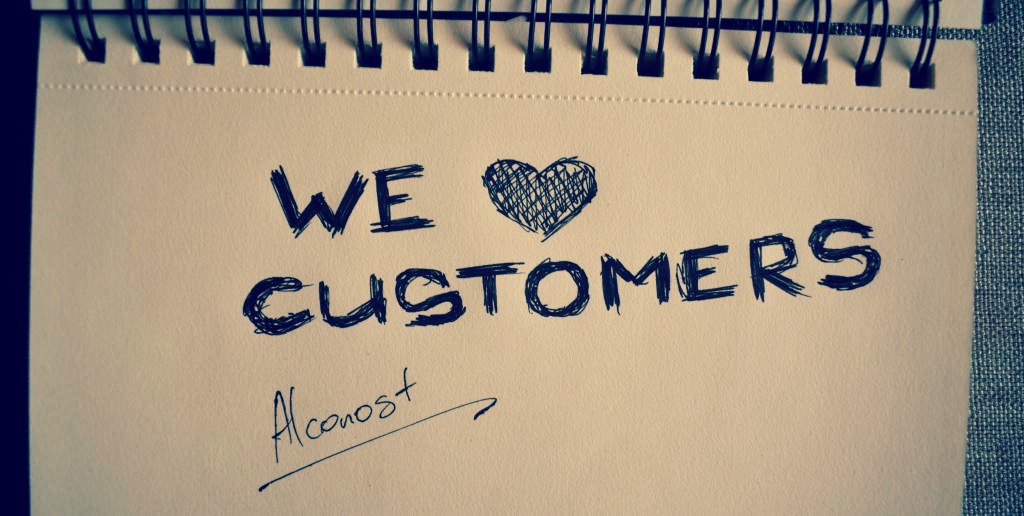How to create cool products: two key principles from the company HubSpot
Alconost is not only a service company. In addition to localizing software and games and creating videos, we also develop several proprietary products. For us, this is a new direction, so we are constantly learning, reading interesting articles.
Today we want to share a translation of one of these articles on customer focus in the development process.

The development team at HubSpot has two main principles for creating amazing products. These principles are borrowed from David Cancel, and in my experience he is 100% right:
Being embodied in different ways at different stages of the product life cycle, these principles remain guiding at all stages: from research at the earliest stage to product creation with minimal functionality and then to its full readiness.
')
Let's reflect on the application of these principles and on their evolution as the product enters the market and stabilizes it.
I hope it will be useful to someone. For me and my colleagues, the application and in-depth understanding of these principles was a real breakthrough.
About the translator
The article is translated in Alconost.
Alconost is engaged in the localization of applications, games and websites in 60 languages. Language translators, linguistic testing, cloud platform with API, continuous localization, 24/7 project managers, any formats of string resources.
We also make advertising and training videos - for websites selling, image, advertising, training, teasers, expliners, trailers for Google Play and the App Store.
Read more: https://alconost.com
Today we want to share a translation of one of these articles on customer focus in the development process.

The development team at HubSpot has two main principles for creating amazing products. These principles are borrowed from David Cancel, and in my experience he is 100% right:
- focus on the client;
- show tangible progress.
Being embodied in different ways at different stages of the product life cycle, these principles remain guiding at all stages: from research at the earliest stage to product creation with minimal functionality and then to its full readiness.
')
Let's reflect on the application of these principles and on their evolution as the product enters the market and stabilizes it.
Experimental sample
- Customer focus: focus on the end user who will be targeted when entering the market. Find out where he spends his free time, what problems he has. Watch him in his natural environment.
- Tangible progress: conduct at least X interviews and / or determine Y major problems to be solved by the product.
Minimally viable product
- Customer focus: try as soon as possible to present the minimum working product to the first user. To ensure that a person wants to pay for the product, or is very upset, left without him - the most difficult part of the case. But even harder is getting the first user. Next is another very difficult stage: grow from one user to ten. Give users your contacts, watch how they use the product, watch their every movement when using them. Start user testing.
- Tangible progress: all attention is on the growing number of active users. From zero to one, from one to ten.
Growth phase
- Customer focus: the product development team should provide direct support to its customers. In appropriate cases, the team should interact with the sales department to repeat the proven experience - not by “for a successful transaction you need to do something”, but based on an understanding of real problems, blocking factors, competitive environment, product differentiation possibilities, shortcomings of existing solutions, and so on. .P. To this end, it is useful to have sales professionals who are not engaged in “functional nonsense,” but do a great deal of measurable work in determining customer needs. If the developer has the opportunity to hear these conversations, the magic begins :).
- Tangible progress: collect data, compile graphs and convey to the team information on the number of active users, activation dynamics, re-payments, user outflow, user inflow on recommendations, the ratio of requests to customers, about everything important as a criterion for the product to meet the market. Every month, arrange for customers to demonstrate new functions: not by mock-ups, not by reports of the quality assurance department, but live.
Finished product
- Customer focus: record the reasons for the most frequent requests to the support service, report them and keep records of how each month they are getting smaller. Actively resort to custom testing to optimize core processes and product usage scenarios.
- Tangible progress: measure, plot and report to the company the following data: the ratio of the number of requests to the number of customers, the main issues of concern (and their monthly dynamics), uptime or availability, performance or speed. Continue corporate demonstrations and include performance improvements in addition to the main product features.
I hope it will be useful to someone. For me and my colleagues, the application and in-depth understanding of these principles was a real breakthrough.
About the translator
The article is translated in Alconost.
Alconost is engaged in the localization of applications, games and websites in 60 languages. Language translators, linguistic testing, cloud platform with API, continuous localization, 24/7 project managers, any formats of string resources.
We also make advertising and training videos - for websites selling, image, advertising, training, teasers, expliners, trailers for Google Play and the App Store.
Read more: https://alconost.com
Source: https://habr.com/ru/post/216371/
All Articles